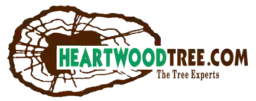CALL TO MEET WITH AN ARBORIST
704.525.3066 Charlotte
828.231.6008 Asheville
704.892.8927 Lake Norman
Dutch Elm Disease
(DED)
Dutch Elm Disease (DED) is a fungal disease which affects all native North American species of elm and those from Europe as well. The disease was first detected in the United States in Ohio in the Summer of 1930 and had made its way to North Carolina by 1962, being first detected in Greensboro in a winged elm (Ulmus alata).
The disease is primarily transmitted to new trees through the movement of several different species of elm bark beetles. The beetles seek out elms in the landscape and woods and tunnel into the bark to feed and lay eggs. During this process the fungal spores from the disease are spread from the bodies of these insects into the tissues of the new tree. When the eggs hatch, they begin to tunnel around under the bark.
The fungus continues to spread, being moved by the bodies of these insects. As the fungus infects a tree, the water conducting vessels (xylem) become plugged up and effectively shut down the tree’s ability to move water and other materials. The primary sign for the visual identification of DED is ‘flagging’ in the canopy of the tree.


Treatment & Prognosis
There are two avenues of treatment for DED; preventative and therapeutic. Preventative treatments are designed to reduce the likelihood that DED will infect an existing healthy elm and are done every 2 years. Therapeutic treatments are recommended after DED has been detected in a tree and include both the introduction of a chemical into the tree and pruning out any affected limbs. There are limits to the effectiveness of treatments once a tree has been infected. Trees with over 15 to 20% of their canopy showing signs of the disease will most likely not respond positively to treatments and should be considered for removal.
Hope For The Future:
There’s been a lot of work done over the decades since the introduction of Dutch Elm Disease to not only treat existing trees, but to develop new resistant varieties of elms. There are a good number of different selections available as substitutes for the American elm including; Princeton, Valley Forge, and Homestead. Variety is going to be 100% resistant, but many have shown resistance against the disease.
GET LIVE UPDATES FROM HEARTWOOD TREE
Stay current with the updates, newsletter and our event schedule. We are passionate about increasing awareness about the diminishing canopy coverage of our planet and we’re always staying involved to continue to be a part of the solution.

